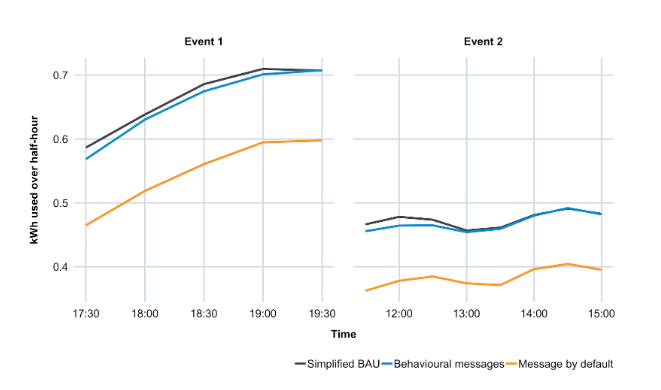On hot summer days, power usage in Australia skyrockets as households and businesses turn on their air conditioners. Energy usage can increase by over 45% on these days, particularly between 3pm and 6pm when both households and offices are running their air conditioning.
The traditional approach to these peak-demand events has been to rely on emergency power plants that operate for as little as 20 hours a year. These power stations are expensive to build and to run, and using them causes the cost of energy to increase up to 140 times during these periods. This is why energy providers like Powershop Australia are turning to a new approach: behavioural demand response.
Demand response encourages consumers to briefly reduce their burden on the power grid during high demand periods, often using a simple prompt. This saves money for both the consumer and the power retailer, creating an incentive for both parties.
In a new trial, we collaborated with energy provider Powershop Australia to help reduce energy demand during these busy periods and make the most of Powershop Australia’s demand response system.
Changing who participated in a demand response by default
We wanted to increase the use of Powershop Australia’s fantastic demand response program, Curb Your Power (CYP), and one strategy we used was to change the default.
People who were Powershop customers, but were not in CYP, were defaulted into the program but given the option to opt out. In our trial these households, who were enrolled in the demand response program by default, used 13.8% less power during peak demand events (Figure 1).
Consumers who were already enrolled in CYP were not receptive to behaviourally informed messages. It seems that people who plan to control their energy use are already motivated, and don’t need a nudge.

The large impact of the default message is likely driven by two factors:
- Far more people received a message by default than by choice (99% vs 13% in the business as usual condition).
- Customers not already enrolled in CYP use more energy on average compared to CYP participants – this means they had more room to reduce their power usage during the event.
This trial highlights how effective a change in defaults can be, even when compared with other behavioural interventions. There are over 8 million households in Australia – defaulting every household into a demand response program could dramatically reduce our national energy consumption. This would remove the need for expensive power plants that sit idle for most of the year and help the environment.





